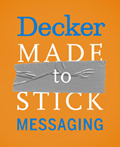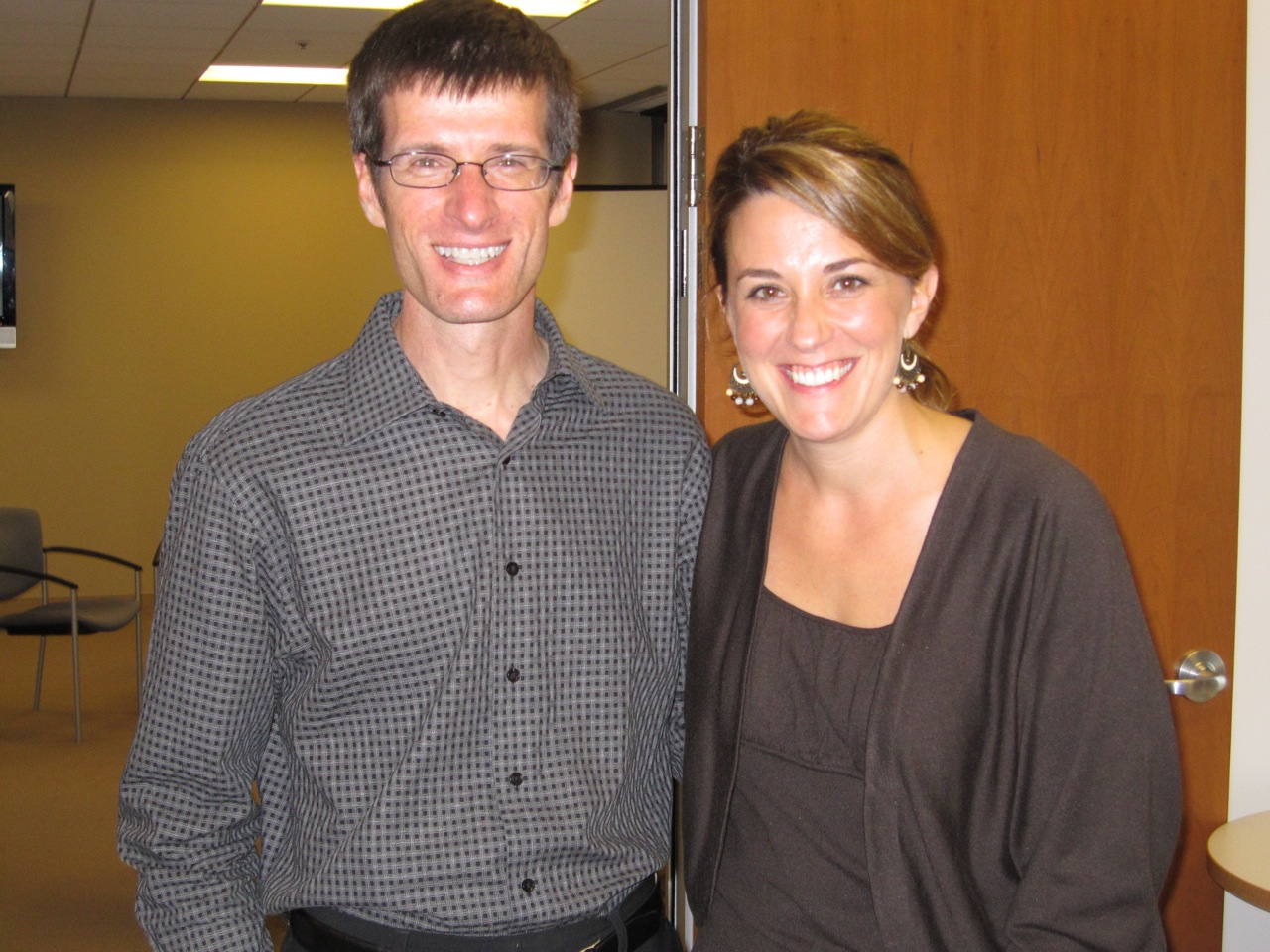"If you have an important point to make, don't try to be subtle or clever. Use the pile driver. Hit the point once. Then come back and hit it again. Then hit it a third time, a tremendous whack."
-Sir Winston Churchill

I used this quote to start our great day on Tuesday - the premiere of our new program, Decker Made To Stick Messaging. What I love about these words of wisdom is that great, sticky messaging can be learned. You don't have to be "subtle or clever", be born with a wildly creative mind, or spew the perfect witty comment at all the right times. What a relief!
Earlier this year, we set out with Chip and Dan Heath to combine our Decker Grid with their Made To Stick SUCCESs template into a training program to teach anyone - regardless of creative DNA, experience, title or industry - to create sticky messages. It came to fruition on Tuesday, when Chip and I led a diverse group of 20 business leaders through a hands-on experience that yielded some amazing transformations - and it was really fun, too!

More details and examples are coming, but for now, just a couple highlights:
The CEO for a furniture company came up with a fantastic Unexpected statement to describe his product, "You may think of modern furniture as being cold and sterile, but this is completely the opposite. It's warm and comfortable, like your favorite pair of jeans." Contrast this to typical business-speak which might have sounded something like, "the environmentally-friendly materials combine with durable construction and charismatic design to create inherently unique pieces." Alleluia!
Another participant used Credible human scale statistics to call her listeners to action and become an advocate in a non-profit organization. In her initial pitch, she used really big numbers, like 248,000 out of 750,000. At the end of the day, she converted those numbers into something so meaningful that she had half the audience in tears. She stated that only 1 in 3 kids are assigned an advocate in this organization, and went on, "that means that if you have three children, you have to decide which one will get assistance and support. You have to single one out and provide them with an advantage over the others." That did it for me. She made big, lofty, somewhat incomprehensible numbers hit home...hard.
Others were able to unbury the lead of their pitch and focus their message. Still others told stories, found feeling, and removed jargon-filled abstractions to make their ideas concrete, visual and meaningful.
How did it all happen?
Structure: We developed a new messaging folder that incorporates our Grid with the SUCCESs checklist. As we worked through exercises for each section, each person continued to refine their pitch throughout the day using easy-to-apply tools and simple recipes to make it stickier, little by little. Here it is in action, with post-its and all.
Video: Yep, even though it's a messaging program, video was a key component. We used cool little cameras attached to tabletop tripods to record a before and after pitch to witness the transformations. Here's David, a Yahoo, recording his group (and there's Chip right behind him, totally focused on feedback):
Feedback: Working in small groups, each person received Keepers and Improvements from peers to learn what was working and what wasn't in their messages. Many found the Curse of Knowledge was unfortunately alive and well when others in their group just didn't get it!
All in all, it was a huge, sticky SUCCESs (no pun intended). Stay tuned for testimonials, before/after videos and many more great examples. In the meantime, you can check out Jay Ehret's (@themarketingguy) blog post for his top takeaways.
Can't wait for the next one! BTW...we're already sold out for November. Check the website to register for December 2nd!
You guys should seriously pick up some flip videos- but maybe the ones you have do the job for now. So excited to get this book!
We tried Flip cams! You’re right, they’re great tools, but we needed additional functionality for playback in class.
Some very sound advice hear with the hit them three times with the same point. One suggestion is to make the point visually (most people are visual learners and can picture the point), then try the point from an auditory perspectives, and finally from a kinastetic viewpoint, so that they can also ‘feel’ it. Rgds Vince